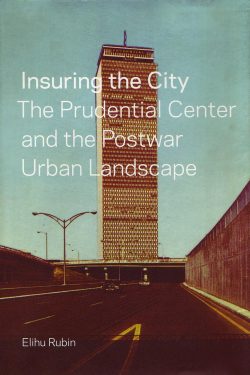One of the most significant urban developments of the 1950s and ’60s, the Prudential Center anchors the Boston skyline with its tall gray tower. It is also a historical beacon, representing a midcentury moment when insurance companies like Prudential paid particular attention to how their physical presence and civic engagement reflected on their intangible product: financial security.
For Prudential executives, the construction of a new complex of buildings was not only a way to house the company’s regional headquarters, but was also an investment in central Boston at a pivotal time in the city’s history. To carry out its ambitious project, the private insurance company succeeded in establishing itself as a quasi-public entity, permitted by city planners to use real estate development as a means of fighting urban blight. Architectural historian Elihu Rubin tells the full story of “The Pru,” placing it in the political, economic, and architectural contexts of the period, and providing new insights into urban renewal in postwar America.
Elihu Rubin
Elihu Rubin is an architectural historian, city planner, and documentary filmmaker. He is an assistant professor of urbanism at the Yale School of Architecture.
